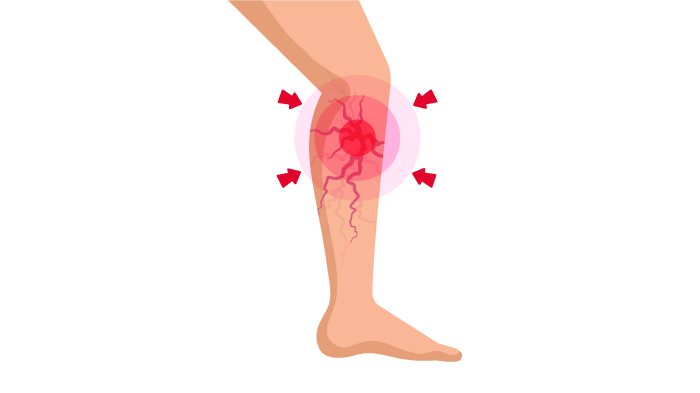Venous Ulcer Surgery in Sadashiv Peth, Pune
Venous ulcers refer to a wound or a soar caused on the leg or around the ankles because of improper functioning of damaged veins. They are also known as stasis ulcers, varicose ulcers, or venous leg ulcers. It takes a long time to heal as the blood circulation around the area is obstructed. They can take from a few weeks to years for healing. Venous ulcers can reoccur. Treating them is very important as they may lead to more serious conditions. Venous ulcers are usually found to be irregular, shallow, and located over bony prominences. They can be painful and harm the overall lifestyle.

Causes
High pressure in the veins of the lower legs causes venous ulcers. Most of the cases of venous ulcers are caused when the venous valves fail to properly prevent the backflow of blood, or venous reflux, from deep veins back to the superficial veins. These superficial veins are located between the skin and muscles.
Other possible causes of venous ulcers can be:
- inflammatory processes resulting in leukocyte activation
- endothelial damage
- platelet aggregation
- intracellular edema
There may be certain risk factors that may be related to venous ulcers:
- Diabetes mellitus
- Obesity
- Pregnancy
- Congestive heart failure
- Peripheral vascular disease
- Deep vein thrombosis
- Old age
- Previous leg injury
Symptoms
Venous ulcers are generally accompanied by the following symptoms:
- stasis dermatitis, indicating scaling and erythema of the lower extremities
- Hemosiderin staining, wherein there are brown and yellow patches appearing under the skin
- Swollen leg
- Firm skin with reddish-brown coloring
- Heaviness in leg
- Cramps in the leg
- Itching and tingling sensation in the leg
- dark red or purple patching as a result of blood leaching around the surrounding tissue
- large and shallow wounds with irregular margins around the lower leg or ankle
- the base of the ulcer is generally red
- pain resulting from subsequent infection
- unevenly shaped borders
See a doctor if you experience the above-mentioned symptoms:
Request an appointment at Apollo Spectra Hospitals, Jaipur
Call 1860-500-2244 to book an appointment
Treatment
There are diagnostic tests like Doppler ultrasonography, Doppler bidirectional flow studies, Venography, and Ankle-Brachial Index (ABI) that can be used to test for venous ulcers.
The treatments of a venous ulcer include:
- medication – aspirin, oral zinc, pentoxifylline (Trental), and hyperbaric oxygen therapy
- mechanical treatment including topical negative pressure (vacuum-assisted closure)
- conservative management – it includes compression therapy, leg elevations, and dressings
- surgical options may include human skin grafting, artificial skin, debridement, and surgery for venous insufficiency
Instructions for the patients:
Certain measures that can be taken at home to heal venous ulcers are:
- keep the wound clean and properly dressed
- change the dressing on time
- keep the wound and the dressing dry
- clean the wound thoroughly before dressing
- keep the skin protected and moisturized around the wound
- wear compression stockings as recommended
- walk every day to increase the blood flow
- take medication as scheduled
- keep the feet on a pillow while lying
- keep a controlled sugar level
- quit smoking
- exercise as much as possible
- lose weight if needed
- stabilize blood pressure and cholesterol level
Venous ulcers are caused when the valves inside the leg veins, which perform the function of controlling the blood pressure inside the veins, are damaged.
A paste made out of Vaseline-glucose is believed to help cure ulcers in combination with other etiological treatments.
Treatments such as leg elevation, aspirin therapy, dressings, and compression therapy can be used to treat venous ulcers. Apart from this, surgical methods can also be adopted depending upon the size and duration of ongoing treatment.
Symptoms
Our Top Specialities
NOTICE BOARD
CONTACT US
CONTACT US
 Book Appointment
Book Appointment


.svg)
.svg)
.svg)
.svg)








